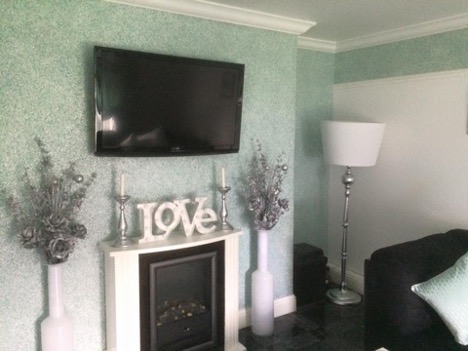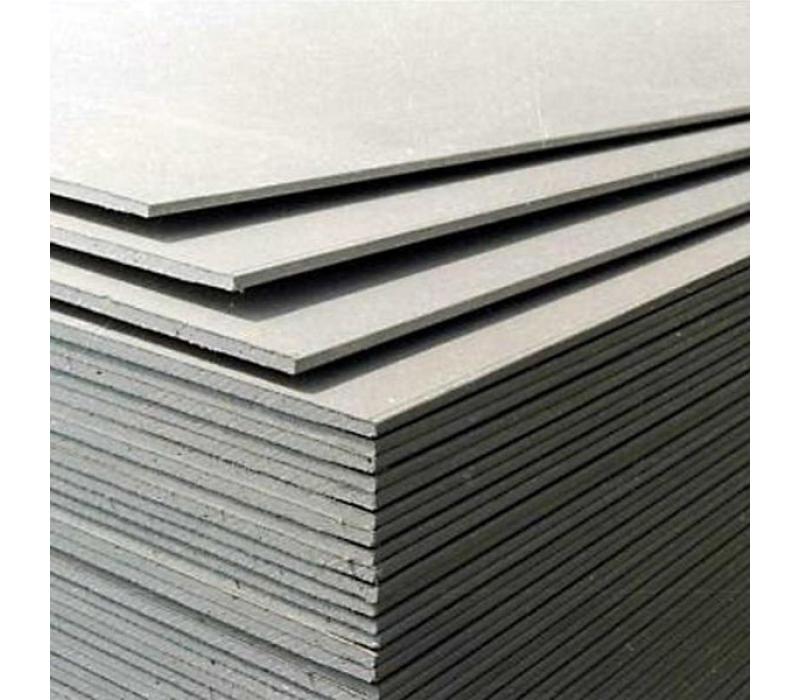What to do before wallpapering: priming and puttying the walls - is it necessary?
Quite often doubts arise about whether it is necessary to prime the walls before wallpapering. In almost all cases, the answer to this question can be positive. In fact, priming is the most important step, which allows you to level out differences, eliminate seams and cracks, and also increase adhesion to the surface. How to properly prepare the walls is described in detail below.
The content of the article
Do I need a primer?
One of the questions that beginners ask is whether it is necessary to prime the walls before wallpapering. Indeed, even some craftsmen sometimes do without this stage, especially if the surface is quite flat. But if you really work for results, there is no need to doubt whether it is necessary to prime the walls before wallpapering.
This is a universal processing method that is suitable for all types of finishing work:
- wallpapering;
- painting;
- applying liquid wallpaper;
- plastering walls.
If you have any doubts about whether a primer is needed before wallpapering, you can easily verify its importance if you keep in mind several advantages of such treatment:
- improving adhesion to the surface of subsequent finishing materials;
- preventing the formation of small cracks and depressions;
- the material allows air to pass through and ensures a normal microclimate;
- prevention of mold and rot.
Based on this, it is clear whether it is possible to glue wallpaper without a primer.On the one hand, this is an acceptable technique, but very undesirable. In most cases, the surface is uneven, so it must be prepared. You can choose any composition for work, mainly 2 types are common:
- Based on acrylic - they are suitable for concrete, brick, plasterboard, wooden surfaces, gas silicate walls, plastered and putty.
- Based on alkyds - also suitable for plasterboard, wood, brick, aerated concrete and wooden surfaces.
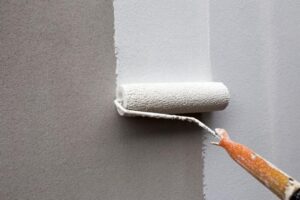
Do I need to putty the walls?
Another question relates to whether it is necessary to putty the walls under the wallpaper. In this case, the answer is not so clear, because it all depends on the condition of the walls and the characteristics of the wallpaper. As a rule, the treatment is carried out in order to improve adhesion to the surface, preserve the color of the wallpaper, and also prevent the formation of bubbles.
It is clear whether the wall needs to be primed before wallpapering. This is a mandatory preparation stage. As for putty, it will be required in many cases:
- thin wallpaper, density up to 150 g per square meter;
- light wallpaper (any density);
- they are glued to a base with uneven or bright colors, with inscriptions, markings, designations;
- the wall is treated with plaster (large fraction);
- there are pronounced seams of drywall, plywood, blocks, chipboard;
- It is planned to use non-woven wallpaper.
There is no doubt whether it is possible to glue wallpaper without priming the walls. In most cases this is a necessary step. Processing allows you to make the surface extremely smooth, without the slightest cracks. In addition, subsequent layers are laid down more densely, which makes work easier and increases efficiency.
But in order for the result to be of high quality, you need to figure out how long it takes to glue the wallpaper after puttying. It is impossible to answer this question precisely, because everything depends on the temperature, composition and thickness of the layer. But roughly we can say that the process will take at least 4-5 hours, sometimes up to a day. In some cases - within 2 hours (quick-drying compounds).
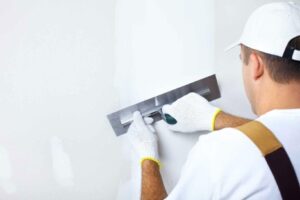
If we consider whether it is necessary to apply a primer before wallpapering, the answer is definitely yes. As for putty, in some cases it is not used:
- it is planned to apply liquid wallpaper;
- it is planned to hang thick wallpaper (the base is not bright, monochromatic);
- The base is of high quality, there are no seams or irregularities.
Step-by-step instruction
Now it is clear that it is necessary to prime the walls before wallpapering. Surface preparation is carried out in several stages; you must first purchase the following tools and materials:
- set of brushes;
- lint roller;
- container (bucket);
- rags;
- stairs;
- primer;
- putty;
- glasses, mask, gloves.
Preparatory work is carried out as follows:
- Remove the old coating, clean it from grease stains, dust and other contaminants. Sometimes the question arises whether it is possible to apply putty to wallpaper, i.e. on the old base. This is also an acceptable technique, but first you will still need to treat it with impregnating primer.
- Stains are not always easy to remove. To do this, it is advisable to use not only detergents, but also antibacterial and antifungal agents (in case of the presence of mold and other microorganisms).
- We have already discussed above why walls are puttied before wallpapering. But first they need to be primed.During the initial treatment, the surface is disinfected, after which it is passed over with a roller a second time.

- There may be cracks, seams and other defects on the surface. Puttying and priming the walls under the wallpaper is exactly what is required in order to remove them. Any cracks found should be filled with the prepared putty mixture and smoothed using a spatula. When everything is dry, sand it with sandpaper.
- It was already discussed above whether a primer is needed for wallpaper. This is the primary treatment to obtain a smooth surface. But in order for the result to be of high quality, you should go through the primer a second time. This is necessary for disinfection and the formation of a protective film.
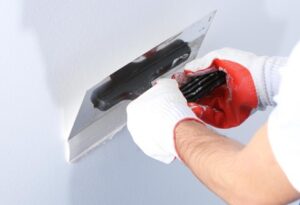
- Now it remains to figure out when you can glue the wallpaper after puttying. You need to wait a few hours, focusing on the actual condition of the surface.
Thus, in most cases there is no need to doubt whether the walls need to be primed. This is the main preparation stage, which follows immediately after removing the old base and cleaning the surface from dirt and grease stains. Next, you should evaluate the condition, whether it is necessary to putty the walls before wallpapering. If the wallpaper is thick, this is not necessary. If they are thin, and the base itself has defects, this procedure is also carried out.




